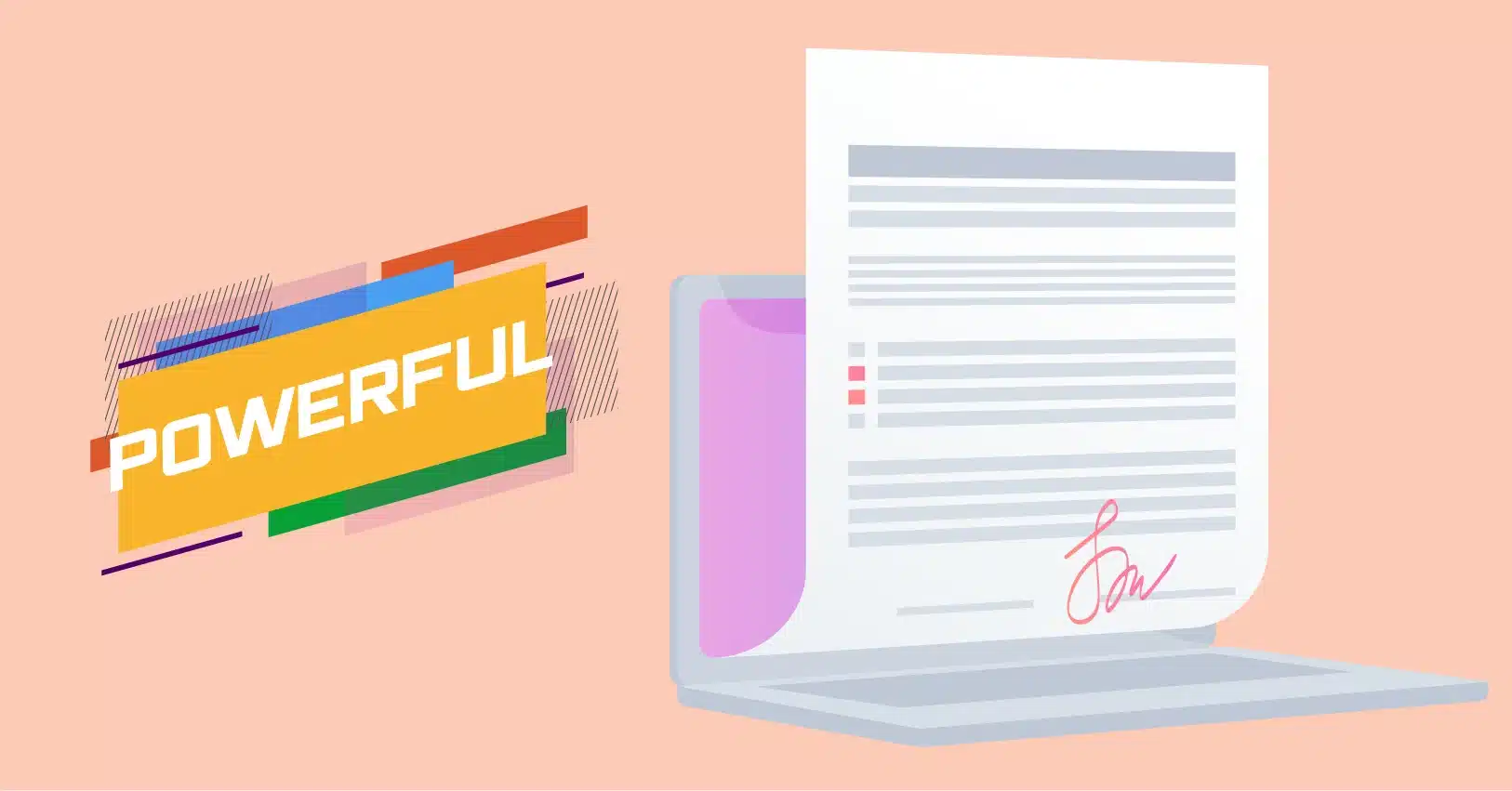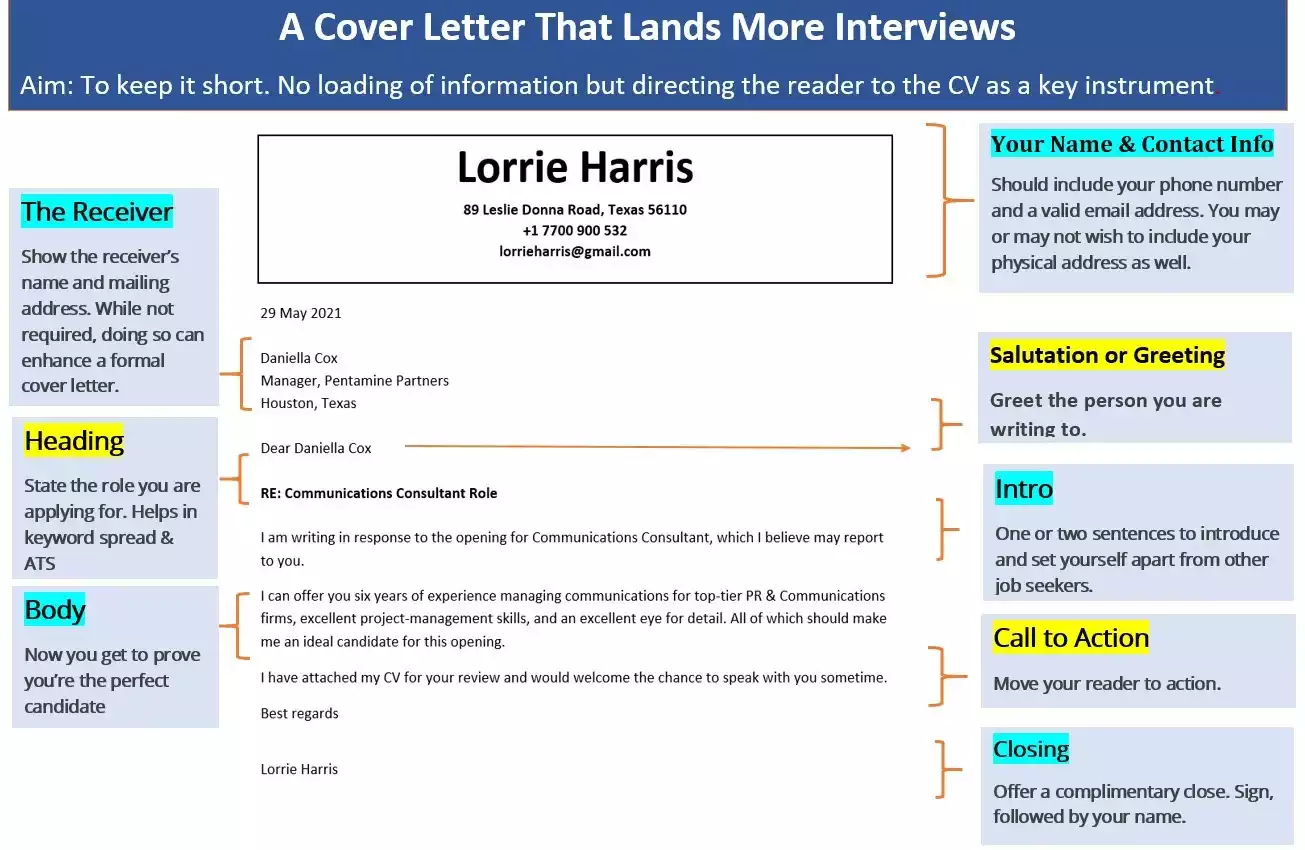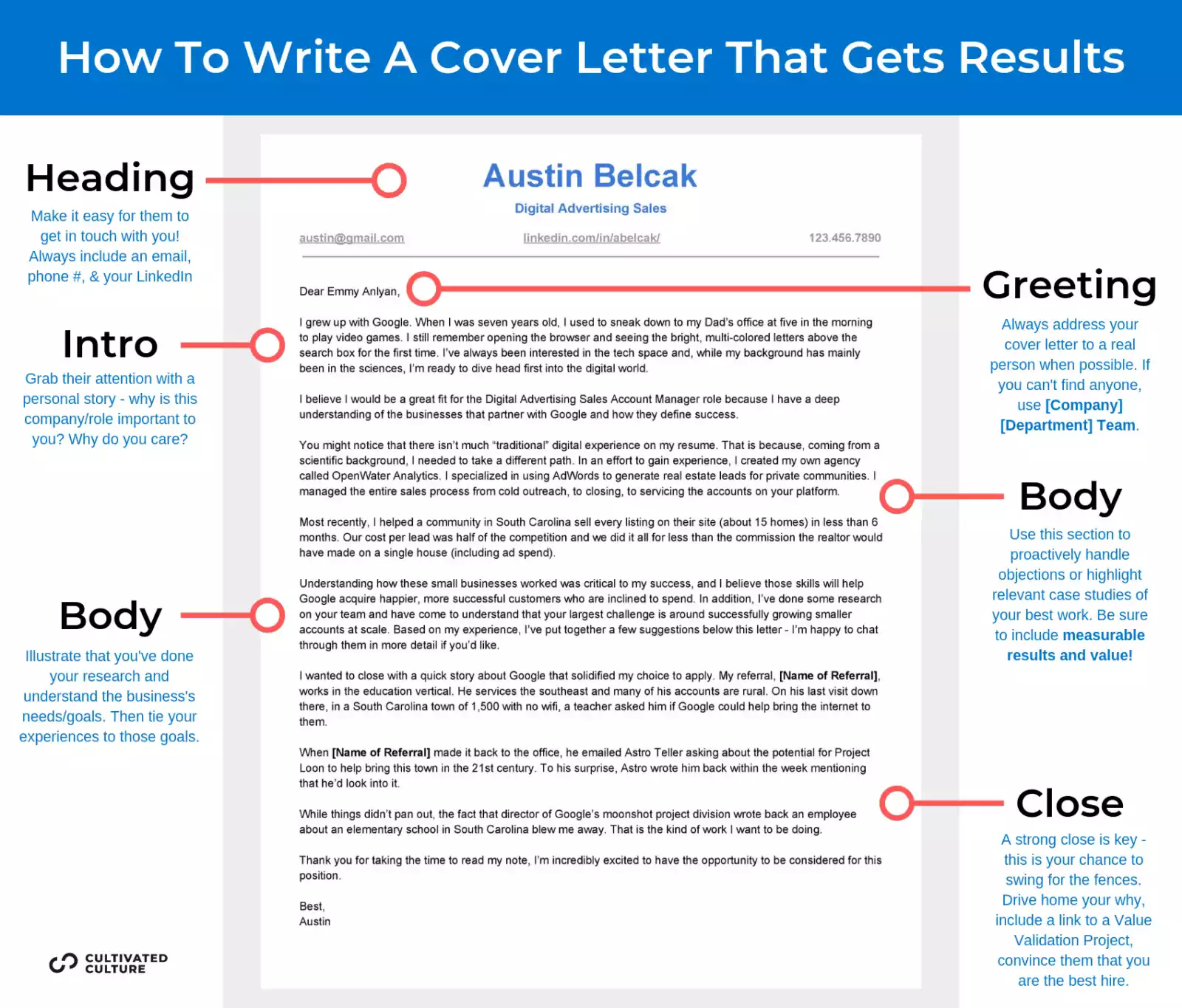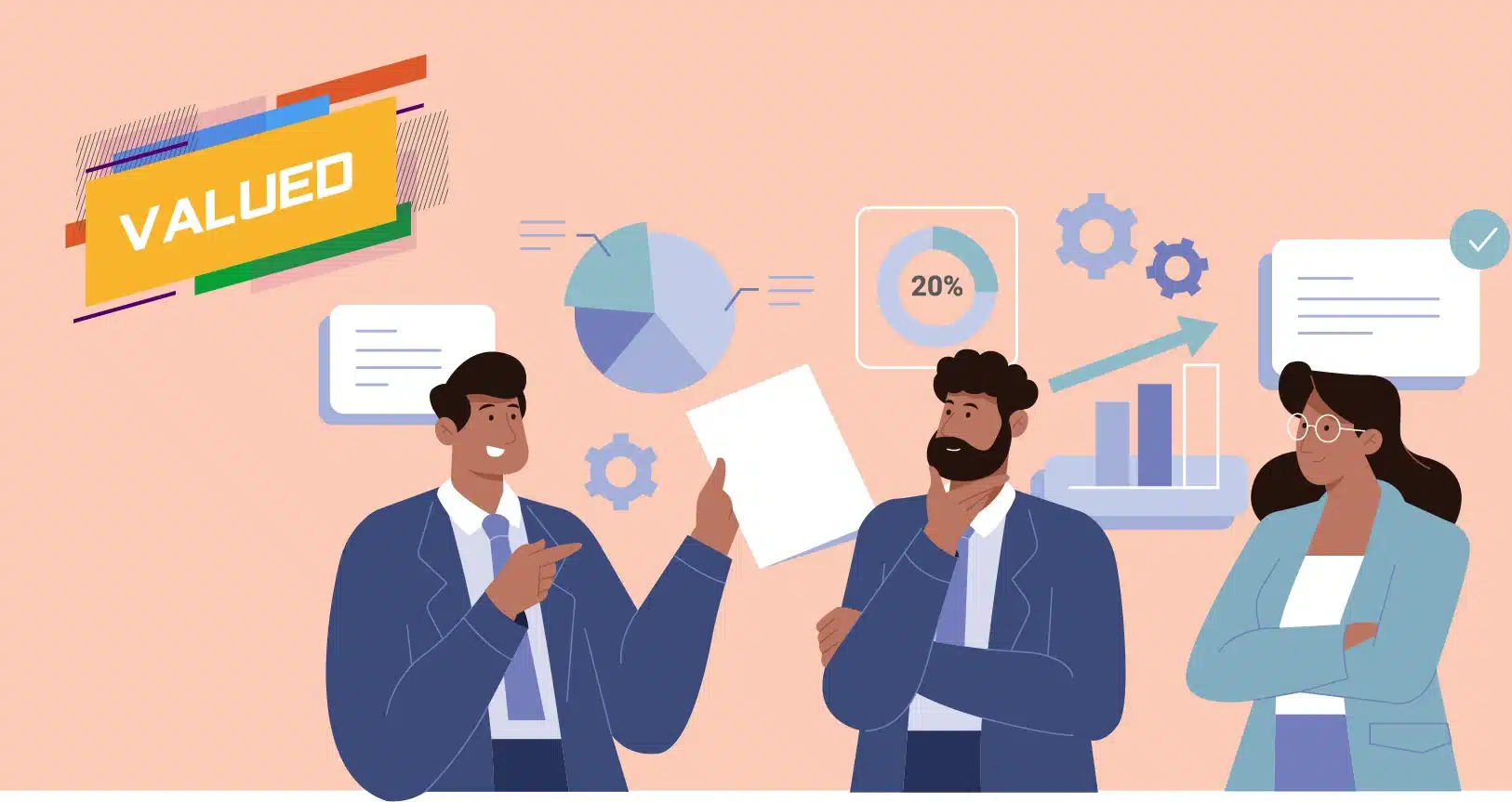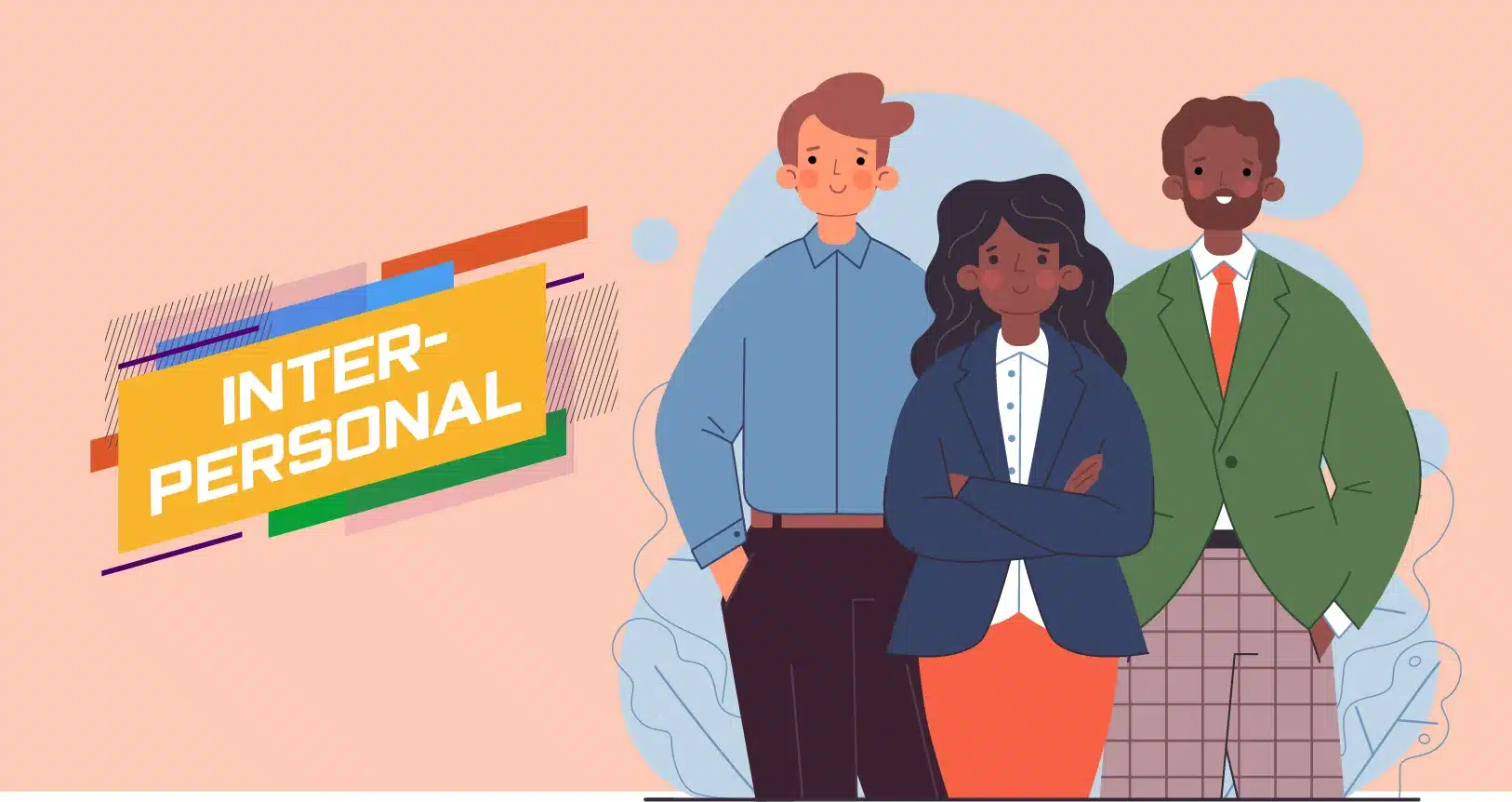SUMMARY:
The job application process is long and cumbersome. And knowing how to write a good cover letter needs experience. So, it can get stressful when you must prepare a cover letter, resume, and portfolio. This explains why so many job applicants are tempted to skip it.
And then they do, which is a mistake.
According to a ResumeLab survey, including cover letters in your job applications increases your chances of getting hired or landing more interviews by 83 percent.
A good cover letter is specific and targeted. First, it shows you researched the company values, company culture and understand its unique challenges.
It should signify your familiarity with the firm's offerings, including all product lines and services relevant to the job posting.
It should also help you present your vision of yourself as the solution to these challenges.
Used together, a solid cover letter and CV make the perfect match. They can land you the lead to that job you want.
But how do you write a winning cover letter? How do you highlight your skills in a way that paints you as a great addition to the team? What if you have employment gaps?
How do you convince a hiring manager or recruiter to offer you still the job opportunity?
The following proven guide will answer these and other cover letter questions.
The goal is to help you write a solid and convincing cover letter to accompany your resume.
You will also find cover letter examples to help train you on the proper structure and wording of a winning cover letter.
So, let's get started.
*If you haven't created your resume, click Build My Resume Now to start.
Beyond the Resume: The Essence of The Cover Letter
Job hunting is one of the most grueling experiences of adult life.
Before you get your dream job, you must leaf through countless job ad listings, re-work and submit your resume, prepare for interviews, negotiate your salary, and more.
This is why the need to write a cover letter doesn’t instinctually make sense.
Why add extra work to an already-grueling task? Because creating a great cover letter works in your favor.
A resume outlines your experiences, but a cover letter goes beyond that. It explains the skills, talents, and qualifications that fueled your accomplishments.
It helps convey enthusiasm and excitement for the job—it shows you are excited about the prospect and idea of working there. It helps emphasize why you, and not any other applicants, are best suited to the role in question.
Moreover, a good cover letter shows your personality and values and highlights your passion for your craft. It tells the reader or client that you enjoy working in your position and industry.
To help you tap into this powerful tool, this article will teach you:
- What a cover letter is and why a responsible candidate should care
- A sure formula for writing the best cover letter
- Ways to reflect gaps in your cover letter template
- How to proofread and format your cover letter
Expert Advice
Did you know that according to a survey by Resume Lab, writing an excellent cover letter can increase your chance of getting an interview posting by up to 83%?
Even if your CV is below average, you can explore CV Tools now to spruce up your CV.
We’ve included expert tips to teach you how to write a perfect cover letter.
Plus, 25 cover letter samples that you can learn from so you don’t miss out on future job ads.

Real-World Applications of a Cover Letter: Case Study 1
A generic cover letter pinpoints your skills and experience.
But it does tend not to grab the attention of the hiring or prospective line manager or recruiter.
Only a cover letter tailored to the company you’re applying to can do that.
Consider Emily’s scenario:
As an experienced sales and marketing expert for many years since college, Emily submitted a job application for a sales position at a prestigious marketing agency.
She included a customized cover letter using an analogy the company CEO had once used to describe the organization as inspiration.
Her research of past news revealed that the CEO had likened the company’s growth to a bamboo plant.
So, she did the same.
She turned the analogy into her story and main point and defined her career as sturdy, resilient, and thriving—like a bamboo plant.
Focusing on and talking about this detail confirmed to the hiring manager that Emily was not just a creative marketing expert; she had also done her homework.
She’s now the account manager.

What Is a Cover Letter – Why All the Fuss?
So, how can you replicate Emily’s success? You write a cover letter.
Let’s start with the basics. What is a cover letter?
A cover letter is a short but detailed document you submit with your resume when applying for a specific position at an organization.
The letter is a brief introduction to the hiring managers. It summarizes your skills, training, achievements, and work experience.
A typical sample cover letter should be between 350 and 400 words long—roughly one page with three or four paragraphs.
It is crucial to note that a cover letter may never replace a resume, no matter how strong.
It should not repeat the information provided in your resume; instead, it should supplement it.
A cover letter complements your CV by allowing you to go into detail about your career accomplishments and interest in the job title for which you are applying.

What Is The Purpose Of Cover Letters?
But why do you need a cover letter in the first place?
Imagine you get invited to an interview.
You wouldn’t walk into a company’s HR department, say, ‘Here are my documents,’ place them on the desk and walk out.
A better way would be to introduce yourself and briefly explain why you’re applying for the role. That’s what a cover letter is for.
It says, “Hello, this is who I am, what I have accomplished, and what I have to offer.”
A strong cover letter helps you demonstrate that your abilities align with the firm’s goal and culture. It promises that the writer can deliver a top-value solution to the employer’s or client’s challenges.
Finally, a cover letter provides insight into your personality.
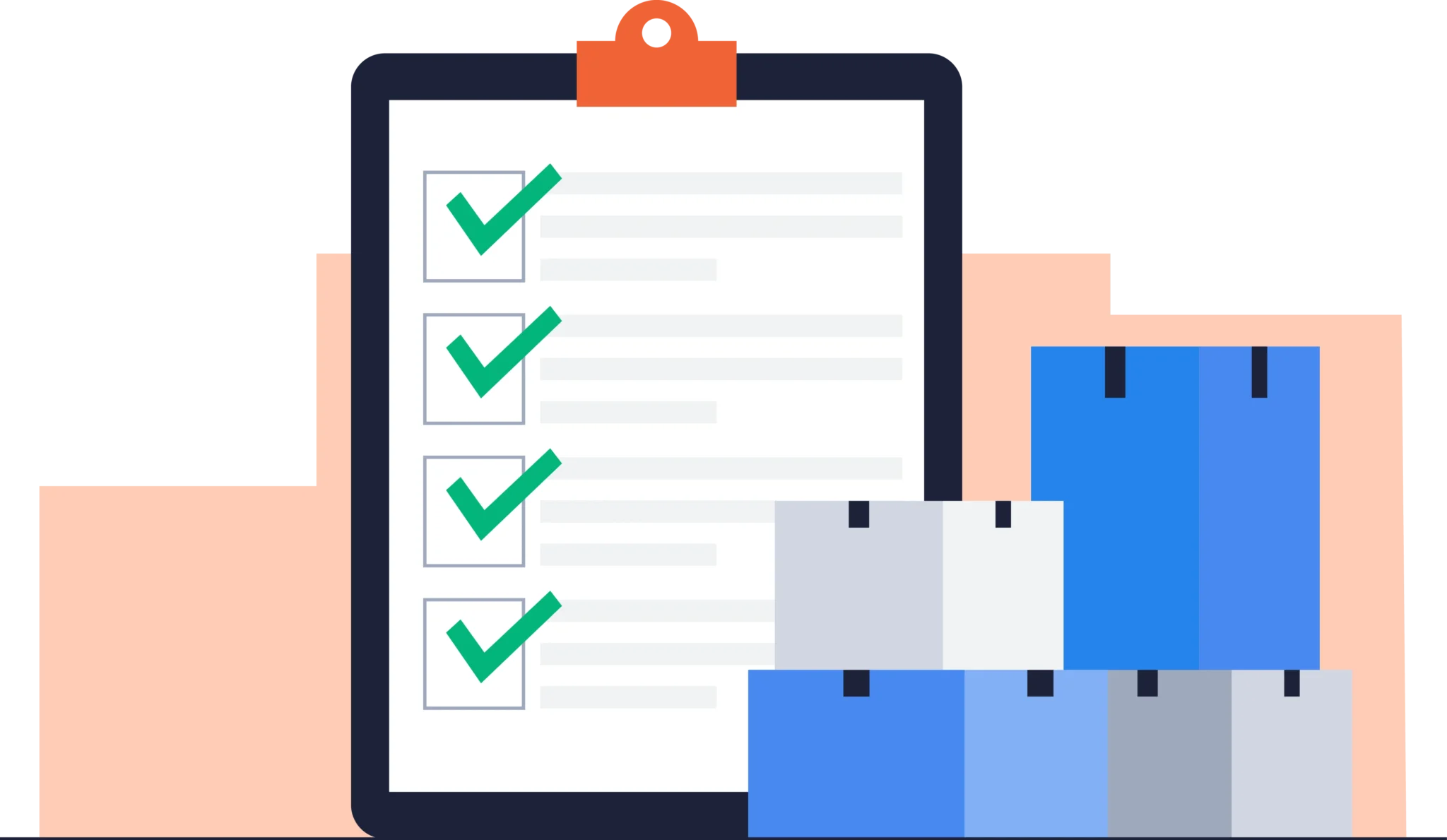
What to Consider Before You Write Your Cover Letter
But before writing your cover letter, you must prepare to hit the ground running.
Start by researching the company. Visit the company website, Twitter, and other social media pages to learn its brand voice.
Read the organization’s mission statement too. Know their line of business, key success, important details, and what promise the organization holds for the future.
The goal here is to learn about the company culture and familiarize yourself with how the company communicates. This information will help you pick the right tone for your letter.
If the company leans towards creativity, you can be more accessible in your phrasing. You may need to maintain a more formal tone and language if it is more corporate.
As you research, learn the recruiter’s name in advance. You will need this for your salutation.
Go through the job requirements several times and note down the keywords. You will convey these in your cover letter template.
You can also search the company online to find out how it is perceived in the industry. Type “XYZ company” into Google and read an article or two.

How To Write A Strong Cover Letter: Step By Step Guide
Now the good part: Writing a winning cover letter.
You need not be a professional writer to crack the cover letter code and be heard.
If you follow these steps, we can assure you that you will be one step closer to your opportunity dream job.
Step 1: Provide Your Contact Information
One thing you never want to forget when writing a cover letter opening is to include your contact info.
If your application is successful, your potential employer must know how to contact you for an interview.
This contact information should include your full name, phone number, email address, and relevant social media links (LinkedIn profile site or a portfolio website). A reliable phone number is critical for recruiters if they want to call you.
Use our free LinkedIn profile builder to create your LinkedIn profile if you do not have one.
You may decide to include your home address, but this is optional.
Step 2: Address Your Cover Letter to the Hiring Manager by Name
Identify the recipient after you detail the company name, date, and address.
Here, the research effort you made will come in handy. You never want to open your cover letter with an impersonal greeting like “to whom it may concern” or “dear hiring manager.”
Instead, use the recruiter’s name you found out earlier and address the letter to them directly.
This is an excellent way to make a good impression, establish a connection, and grab the hiring manager’s attention.
You also want to use their correct title. Even a simple mistake like using the word “Dear Mrs” where it should be written “Dear Ms,” or the phrase “Dear Sir” can work against you.
If the information is unavailable, address your letter to the department team (e.g., The HR Team). The recruiter’s name should follow this.

Like this post?
Sign up for our blog updates and never miss a post. We’ll send you A FREE job interview eBook as a thank-you.
Step 3: Open with a Strong Statement of Intent
Having understood the job description, are you convinced you are a great fit? Good.
Now you need to give the employer the same impression; that you deserve the position.
In your opening paragraph, aim to capture the hiring manager’s interest and get them to keep reading. Everything you say should be passionate and packed with intent from the first sentence.
Start with submitting a header that explains what your essential skills are and what position you’re applying for.
For example,
Experienced Analyst Seeking VBA Developer Role in Financial Services.
Follow this up with a first paragraph that provides more specifics. For example:
“I am a seasoned Accountant with over 20 years of experience in Market Mergers, Sales, and Acquisitions. I believe that working in the account executive role you recently advertised, I could use my expertise, skills, and passion for the job to help you grow your startup.”
Here are some tips for writing this section:
Dos
Send your cover letter to a specific person, preferably the hiring manager, by name.
Address your cover letter to the department team when the hiring manager’s name is unclear or unavailable.
Avoid cold introductions, e.g., “Dear Hiring Manager.”
Don’ts
Address the hiring manager by their first name unless they ask you to.
Downplay your worth; this is not the time to be humble.
Leave the subject heading blank.

Step 4: Outline Your Skills and Experience
The previous paragraph has helped snare the right person’s attention.
In the second paragraph, you must answer what makes you a good fit for this job title.
Identify how your educational background, relevant accomplishment, and professional experience make you an asset to the company.
Mention all your hard skills, such as programming, accounting, math, data mining, relevant communication, management, and cooperation. Where possible, refer back to the skills mentioned in the job description.
Using bullet points can make this key section more visually appealing and help you stay on topic.
Then, tie in all the information to the research you did earlier. State the company’s primary challenge and explain how your qualifications uniquely allow you to solve the problem.
You can start by saying, “Having graduated top of my class from the Harvard Business School Executive MBA 20XX program, I am well-versed in marketing and managing the…”
It is essential to mention and note that, post-pandemic, employers place a lot of stock on adaptable employees and candidates. Sweeten the deal by mentioning and demonstrating your adaptability and ability to learn fast.
Don’ts
Use general statements or fluff words.
Make things up or tell an uncredited story.
Step 5: Explain Why You Are The Best Candidate for the Job
Job applicants often make the mistake of making an example cover letter all about themselves. They go on and on about how much they are thrilled for the opportunity to join. And how it is a personal goal to get this job and grow their careers.
But hiring managers do not want to hear that. They want to know how you will help them and their clients. This is where you relate and match your skillset to the company’s problem.
To get started, review the job description. What gaps is the organization trying to fill with this job listing? Can you find three or five qualifications that make you the best person to meet these needs?
It might seem like you already did this in the opening paragraph. But you can never go wrong with phrasing your cover letter as a solution to the recruiter’s problem. Sell them on you as the best hire.

Step 6: Back Up Your Claims with Examples
Never write a check you can’t cash. In the second paragraph, you must provide written evidence of your suitability for the role.
Be confident.
Focus on a few skills and qualifications that you can best demonstrate.
Remember, the goal here is to go beyond what is in your CV. If the hiring manager can read these details in the CV you prepared with our CV tools, your cover letter serves no purpose.
So to convince the manager, ask yourself the following questions:
- What is one example of a time you performed your responsibilities exceptionally in one of your previous jobs?
- What was your approach to the problem?
- What were the results?
- What was the impact of this project on the company or your department?
Use numbers, data, and statistics to bolster your claims.
Be as specific as possible when you summarize your achievements.
Some interesting suggestions:
- My management of the account reduced costs and waste by 14% within a week
- My contribution helped expand the company’s client base by 32% in 18 months
Top Tip
If you have trouble remembering specific details about a project, contact a former colleague or friend who worked on it and ask them for more information.Step 7: Close Your Cover Letter
Now the closing paragraph.
The best way to end your cover letter is to protect the value developed within the body. You do not want to ruin your stand-by, for example:
- Coming of needy and desperate for the job
- Using cliché phrases like, “Thank you for your time and consideration”
- Appearing passive when you talk about a possible interview
- Using an overly emotional sentence like “I will be overjoyed to hear from you” or “Hearing from you will mean the world to me”
Even the best writers know that sounding needy and “whiny” does not prove your worth and is not one of the qualities companies appreciate or admire.
Instead, you need to calmly and professionally showcase to your audience that you look forward to further discussing how you can help them meet their goals in person.
You can say,
“I would welcome the opportunity to have a conversation with you and discuss your upcoming merger and how we can translate my expertise in [sales] into a successful deal for your company.”
Try out some practice closings with a friend with corporate knowledge until you find one that works.
This final paragraph is also a great place to add additional leads, such as:
- Your hope and availability for interviews, including the phone
- Notice period required if you’re currently employed in a different location
- Your preferred method of communication
- Contactable hours
Finally, finish with a formal closing like “Sincerely,” followed by your name.
If you do not like to use “sincerely,” try:
- With best regards,
- Best regards,
- Kind regards, or
- Respectfully yours,
- With respect,
Add your signature and the date to the conclusion if you send a hard-copy letter to the manager.
Dos
- Outline any crucial details in the closing paragraph that the employers should know
- Make it clear that you look forward to a response from the manager even if the application for the position is unsuccessful
Step 8: Proofread
If possible, the advice is to ask a few friends to peer-review your cover letter before sending it. Ask for specific feedback. For example:‘Is my message clear?”
‘How about the tone? Does it seem appropriate?’
‘Can you suggest any improvements?’
Also, read your letter several times, correcting punctuation, spelling, and grammar errors. Read it out loud to catch any overly-long sentences or awkward phrases. And double-check the spelling of the manager’s name.
Cover Letter Examples and Templates
Check out our 25 free downloadable cover letter examples. Read at least two examples before you start working on your letter.
Addressing Gaps in Your Cover Letter
Gaps in your CV are scary, but they should not deter you from writing a cover letter.
This is especially true if your past few gaps were due to genuine reasons like caring for a sick loved one. Or even traveling, becoming a student to take a course, relocating to a new city, or starting a family.
But here, as in the rest of your cover letter, being creative is vital.
Keep the bit about your gaps brief. Don’t make it the focus of your letter, especially if the details are personal.
Talk about any essential skills you picked up during your gap period or a course you took. And express your desire to become an asset to the company and enthusiasm for the job.
The Final Step: Cover Letter Format
The final step in the process of how to write a cover letter is formatting. It will help you present an organized document.
Format by:
- Using a legible font like Calibri, Arial, or Garamond.
- Using a 10 to 12-point font size.
- Left-aligning.
- Creating balance through even, 1-inch margins on all sides.
- Using a 1 to 1.15 spacing between lines and double spacing between paragraphs.
- Saving your file as PDF to preserve the format.
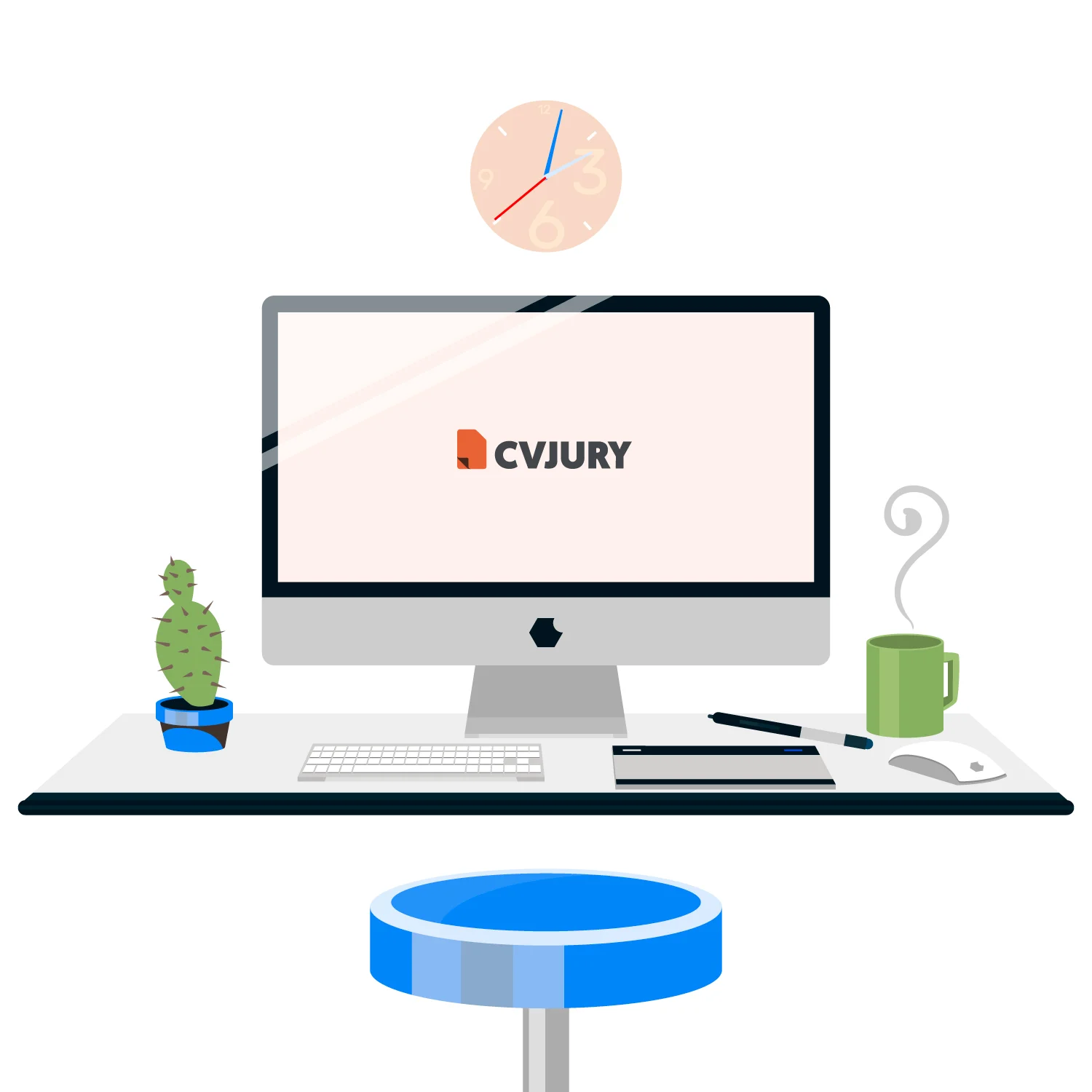
Key Points To Remember When Writing Cover Letters
- An effective cover letter should get straight to the point. After the header, grab the reader’s attention and get straight to the point
- Stick to a body length of between half a page and one page
- Always address your cover letters to the right person
- Tailor your cover letter to a specific job or company
- Never skip the background reading step of your job application process. A quick Google search should reveal everything you need to know about all jobs.
- Show a keen interest and enthusiasm in developing a professional career in the role you’re applying for.
- Also, describe how you see yourself operating within the company in the future if they hire you.
Ready To Write Winning Cover Letters?
By this point, you know that over 50 percent of companies will ignore your application if it is not accompanied by a cover letter.
When it all comes down to it, a good cover letter should explain why the hiring manager should want you.
Why you are the solution to their problem and a good fit for their firm.
Why they should arrange a meeting with you to speak and hear more.
So, what are the three main things needed in a cover letter?
- A strong statement of intent after the header
- A list of skills and capabilities presented with strong action verbs
- Data and figure examples to back up your accomplishments
You cannot go wrong once you have these tips and eight simple steps in this guide.
If you’re still unsure or wondering where to start:
- Click here for 40 great cover letter templates that win more interviews
- Or take a look at David Silverman’s cover letter template
You are now ready to craft winning cover letters. And watch the meeting calls start rolling in.
Recommended Reading: How to write a good cover letter
10 Proven Cover Letter Tips To Win Interviews
Create the best resumes with our free resume builder
How to find a job quicker
Putting the work experience section in a CV the right way

